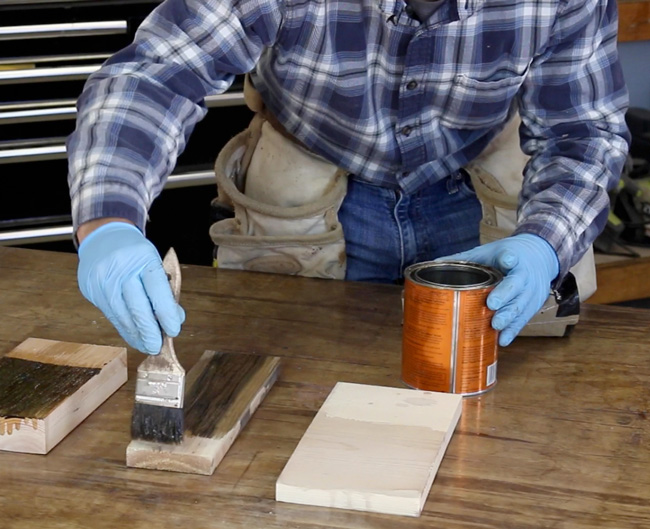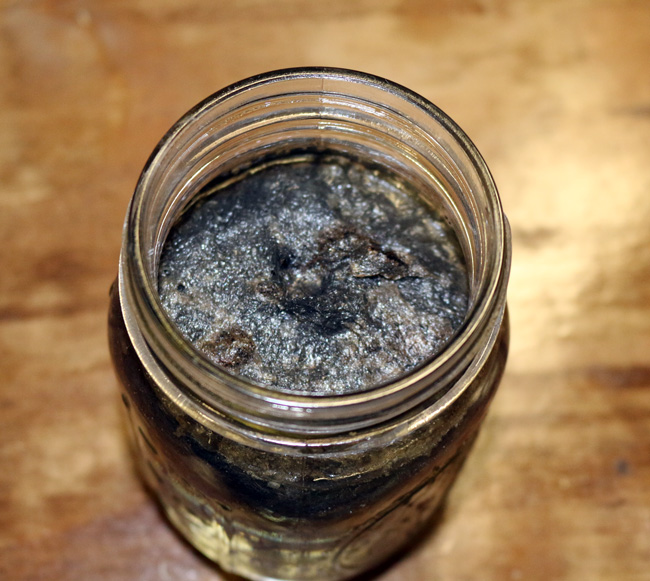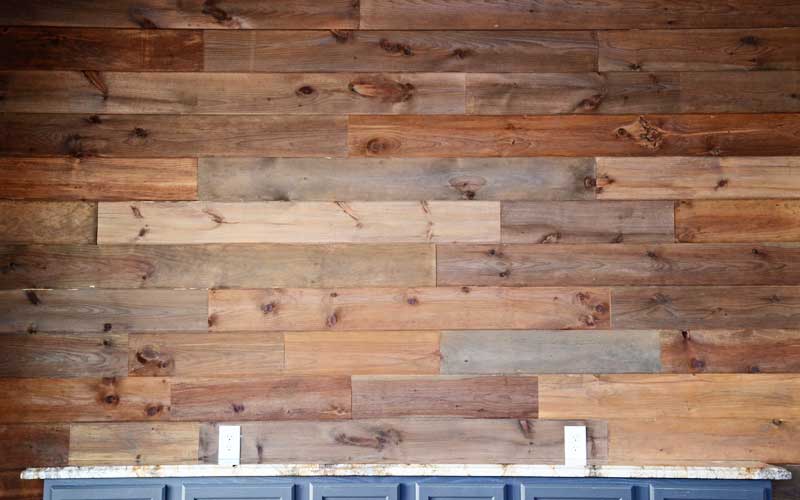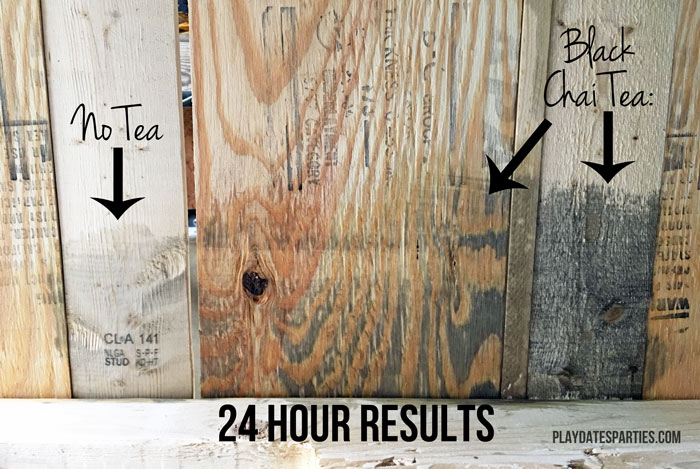- Get link
- X
- Other Apps
Get yourself a clean jar Get some White distilled Vinegar add some Steel wool to the jar I like to tear my pieces to smaller chunks. Perhaps the more vinegar available to react with the steel wool the more rapid the reaction occurred.
 Make New Wood Look Old With Vinegar Steel Wool Tamcam10
Make New Wood Look Old With Vinegar Steel Wool Tamcam10
Plus it causes the steel.
Steel wool and vinegar. How to Darken Vinegar and Steel Wool Stain. The most appropriate way to perform this experiment is to place steel wool and a thermometer in a covered beaker to get an initial stable temperature. Let the vinegar dissolve the steel wool for at least two to three days.
The finer the steel wool the faster it will dissolve. Soak some steel wool in white vinegar for a few hours or a few days the longer it steeps the darker the aged effect will be. Each species of wood will accept the stain differently.
The vinegar caused the metal of the steel wool to oxidize or rust. Now Ill admit I was skeptical at first. The solution should begin to bubble a sign the vinegar is reacting with the steel wool and beginning to break it down.
Then pour enough of the Vinegar into the jar to cover the Steel Wool then let it set for a few days. Rusting or oxidation is a chemical reaction between iron and oxygen this chemical reaction creates heat energy which increases the temperature inside the beaker. It dissolved completely in another few days.
Place the clean steel wool pads in the bottom and carefully pour the gallon of white vinegar over them making sure the pads are completely submerged. Clean your surface then brush it with your tea. When steel wool is placed in vinegar a chemical reaction takes place.
The mixture will get darker the longer you let it sit but you can always dilute that dark concentrate with more vinegar later on. Rust is a product of a chemical reaction between iron and oxygen. Steel wool contains iron.
Use 0000 steel wool shown here so it breaks down. Our expiriment chemical formula What Happened. After 1-2 weeks nothing but nice-looking steel wool in clear clean white vinegar.
Wait 2-4 days for the acidic acid in the vinegar to dissolve the steel wool into a solution. Learn how to make Steel Wool and Vinegar stain to stain wood and give it an aged look. DIY Pete walks you through the steps in this video tutorial and there.
On subsequent batches I started by wetting the steel wool first with vinegar letting it rust then letting it soak. I was too impatient shocker to let the tea dry completely so I almost immediately followed the tea coat with a coat of the vinegar and steel wool solution. This is what turns the oak black but because the vinegar actually contains very little acetic acid the reaction is.
Its a similar reaction that happened to make the vinegar steel wool stain. The acetic acid in the vinegar is causing a reaction between the iron oxide rust on the surface of the steel wool. In conclusion the data showed that the addition of steel wool to vinegar causes the temperature to rise.
Noticeable Odor after reaction has begun Formation of a Precipitate. The tannin in the tea will help to darken your surface once the vinegar is applied. I took the steel wool out let it sit in the sun and air until rusty then reinserted into the vinegar.
The stain reacts with the wood and causes it to oxidize. Vinegar contains acetic acid which removes this coating. Steel wool vinegar reaction.
You may have to wait longer but dont sweat it. When you soak the steel wool in vinegar it removes the protective coating of the steel wool and allows the iron in the steel to rust. Once the vinegar has fully dissolved the steel wool you can use the stain as-is.
Fill the jar with the steel wool and vinegar the measurements dont have to be precise. Steel wool vinegar is a very old staining technique sometimes called ebonizing It works with the tannins in hardwoods. Iron acetic acid iron acetate hydrogen gas It is the iron acetate that is wanted.
When iron is exposed to oxygen rust forms. This will make a chemical reaction with the wood that will give it a wonderful aged and worn look. Interestingly it seemed the greater the volume of vinegar the greater the temperature change.
Steel Wool has a protective coating that keeps oxygen from coming into contact with the iron. Steel Wool and Vinegar Reaction Change in Temperature. Applying a vinegar steel wool stain causes a chemical reaction with the wood.
With the vinegar solution you definitely want to leave the lid off as it releases a gas that youll want to let escape from the jar. The vinegar makes the steel wool rust. Eventually all of the steel wool will dissolve in the vinegar.
The steel wool and vinegar rust experiment is a great example to illustrate the highly exothermic rusting process. Once the vinegar gets below the outer layer and to the actual iron it needs a little more help with oxidation.

 How To Make Steel Wool And Vinegar Stain
How To Make Steel Wool And Vinegar Stain
How To Age Wood With Vinegar And Steel Wool The Navage Patch
 Aging Wood With Steel Wool Vinegar The Cavender Diary
Aging Wood With Steel Wool Vinegar The Cavender Diary
 Aging Wood With Steel Wool Vinegar And Tea Diy Wood Stain Staining Wood Grey Stained Wood
Aging Wood With Steel Wool Vinegar And Tea Diy Wood Stain Staining Wood Grey Stained Wood
 Small Space Solution Diy Industrial Shelves Industrial Shelf Diy Staining Wood Diy
Small Space Solution Diy Industrial Shelves Industrial Shelf Diy Staining Wood Diy
 How To Make Steel Wool And Vinegar Stain
How To Make Steel Wool And Vinegar Stain
 Vinegar Steel Wool Wood Stain Southern Revivals
Vinegar Steel Wool Wood Stain Southern Revivals
 How To Use Steel Wool And Vinegar To Make Weathered Wood We Speak Diy
How To Use Steel Wool And Vinegar To Make Weathered Wood We Speak Diy
 How To Naturally Stain Wood With Steel Wool And Vinegar
How To Naturally Stain Wood With Steel Wool And Vinegar
 19 Steel Wool And Vinegar Staining Ideas Steel Wool And Vinegar Vinegar Stain Staining Wood
19 Steel Wool And Vinegar Staining Ideas Steel Wool And Vinegar Vinegar Stain Staining Wood
How To Age Wood With Vinegar And Steel Wool The Navage Patch
How To Weather Wood With Steel Wool Vinegar Sew Historically
 How To Oxidize And Age Wood In Minutes Gadgets And Grain
How To Oxidize And Age Wood In Minutes Gadgets And Grain
Comments
Post a Comment